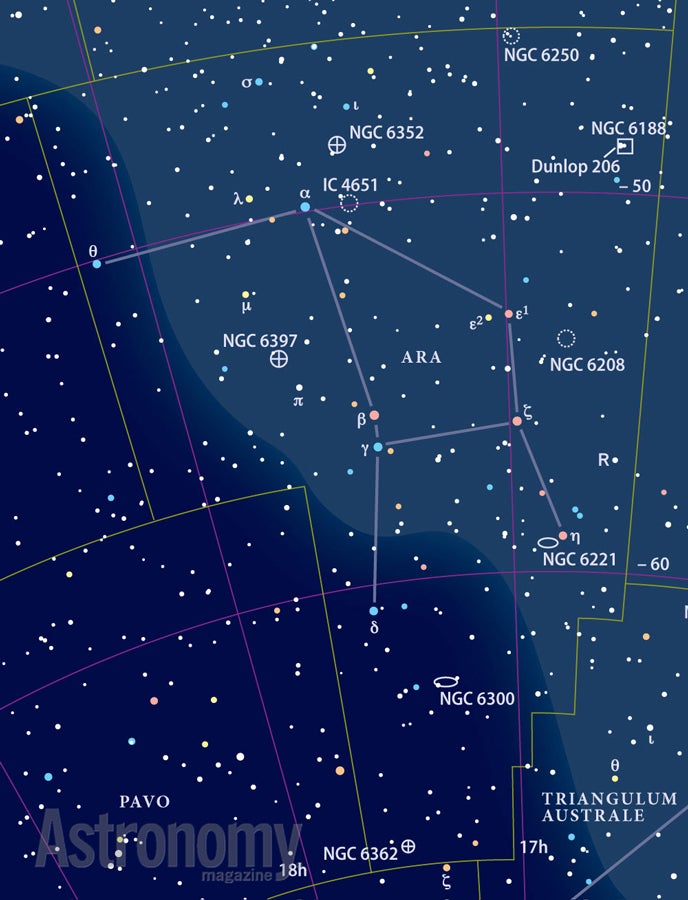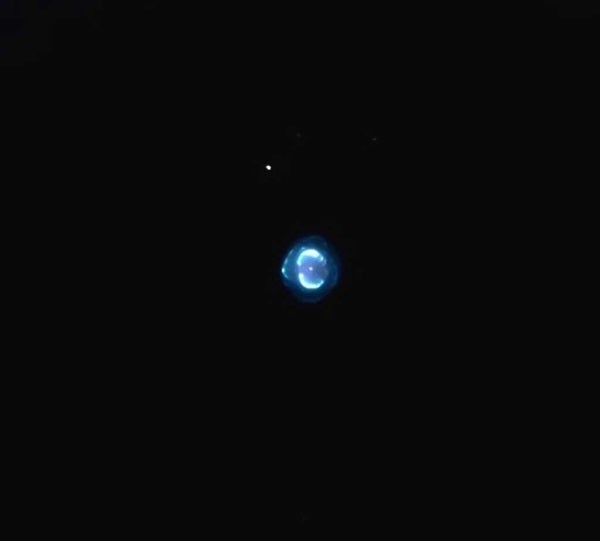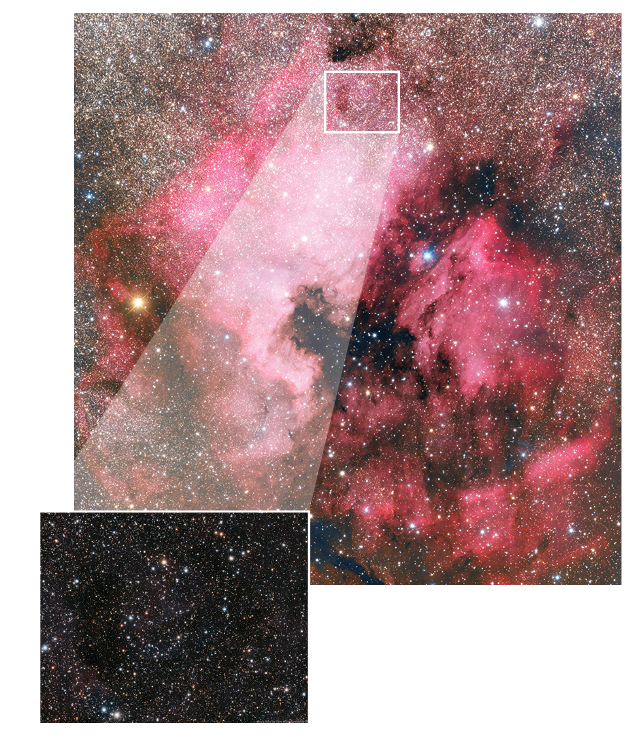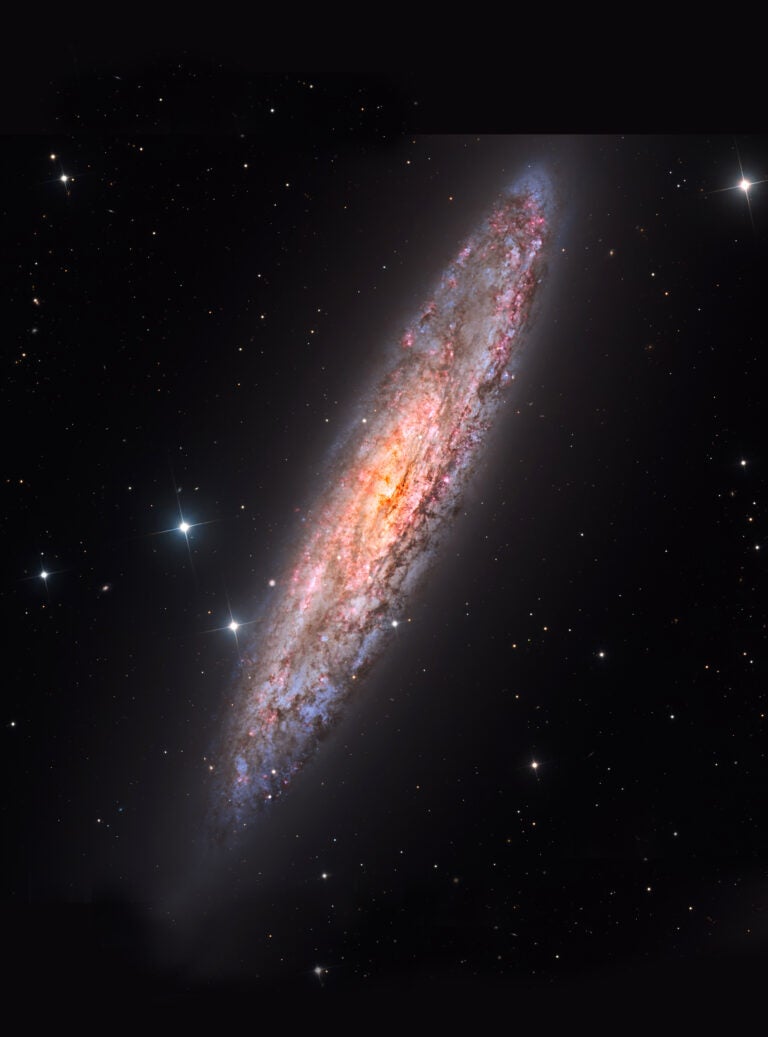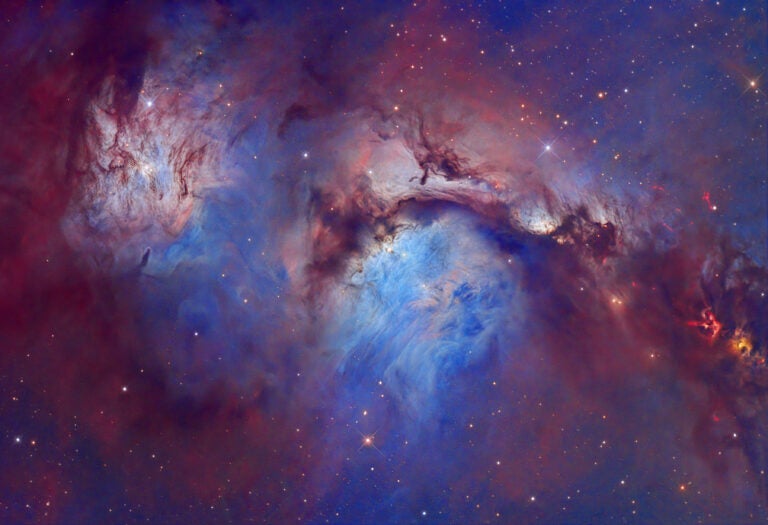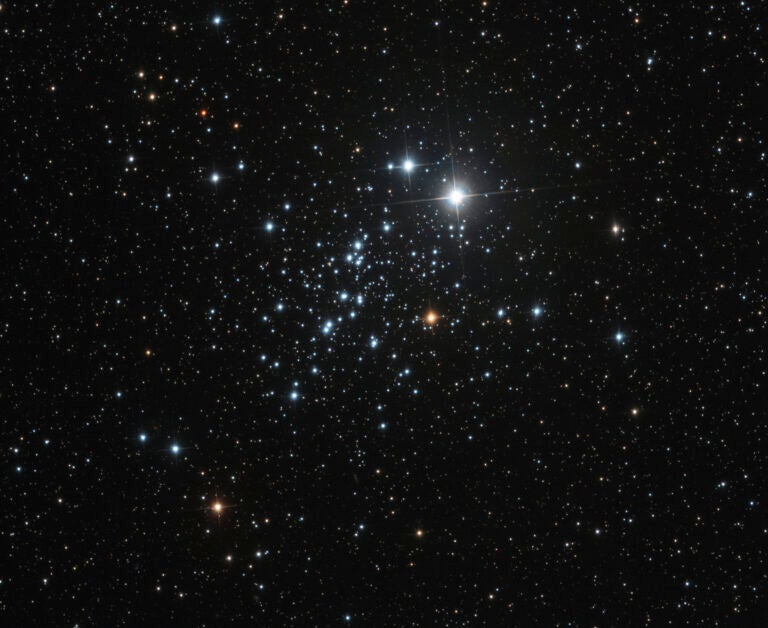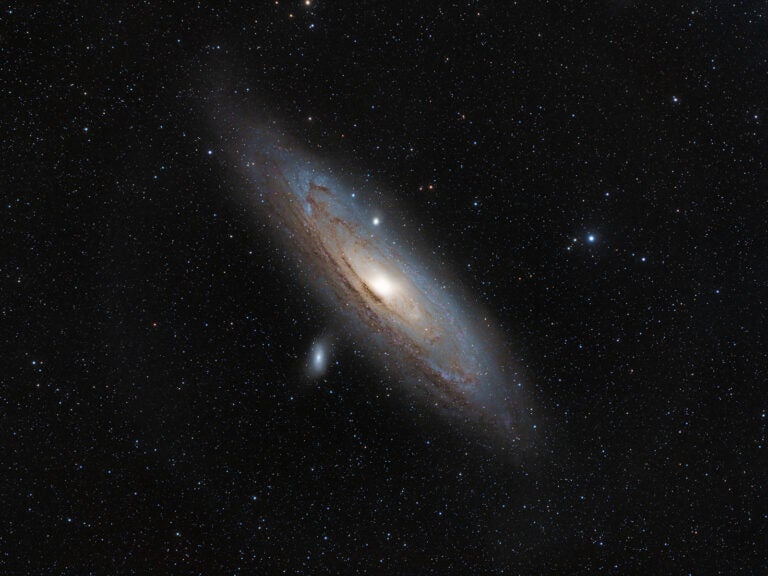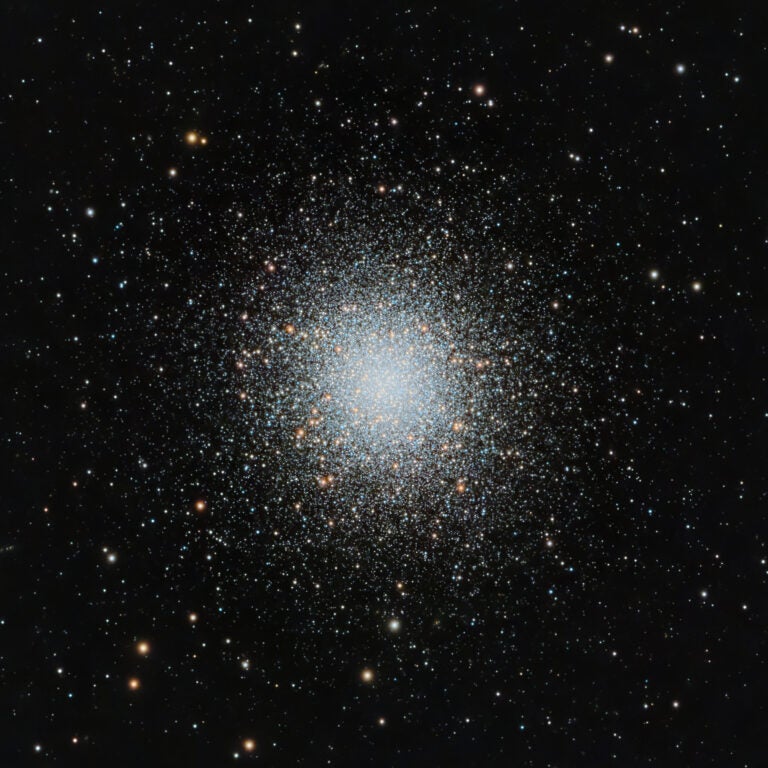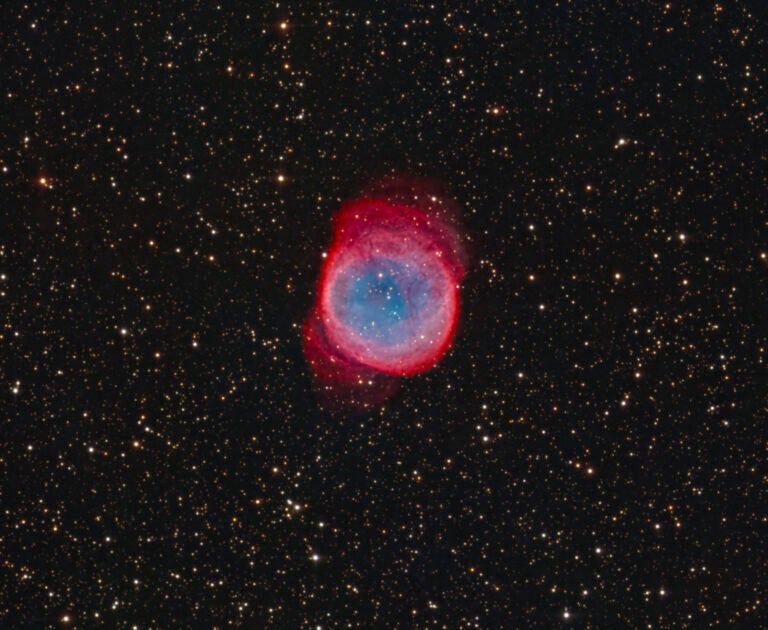Targets for June 25–July 2, 2015
Small telescope:
Globular cluster NGC 6397
Large telescope:
Emission nebula NGC 6559
Large telescope:
Globular cluster NGC 6287
This week’s small-telescope target is globular cluster NGC 6397 in the constellation Ara the Altar. Also known as Caldwell 86, this fine object shines at magnitude 5.3 and measures 25.7′ across. That means this globular covers 68 percent as much area as the Full Moon.
You’ll find it 2.9° northeast of magnitude 2.9 Beta (β) Arae or 0.9° north-northeast of magnitude 5.3 Pi (π) Arae. As the sky’s fourth-brightest globular cluster (tied for that honor with NGC 6752 in Pavo), NGC 6397 certainly would have earned a Messier designation if it were in the northern sky.
If you observe from a location that puts this cluster more than even 10 up in the sky, you’ll find it easily visible with your naked eyes as a fuzzy star. Through a 4-inch telescope at 150x, you’ll resolve some 30 stars slightly concentrated toward the brighter middle.
Through a 14-inch scope, the view is remarkable. Stars of all brightnesses form patterns, groups, and distinct layers. The entire cluster resolves, and some observers have likened its appearance at high magnifications to an open cluster.
At a distance of 7,200 light-years, NGC 6397 is either the closest or the second-closest globular cluster to Earth. M4 in Scorpius lies at the same distance.
Don’t miss this one
This week’s first large-scope object is an often overlooked object in Sagittarius — emission nebula NGC 6559. You’ll find it 0.6° southwest of the magnitude 5.0 star 11 Sagittarii, or 1.4° east of the Lagoon Nebula (M8).
This spectacular star-forming region would get a lot more ink if it lay elsewhere. But most amateurs focus on the two nearby deep-sky dazzlers: the aforementioned Lagoon Nebula and the Trifid Nebula (M20).
For imagers, few regions of nebulosity show the variety of color and detail that NGC 6559 does. Over an area 8′ across, wispy dark clouds hang delicately in the foreground of diffuse, glowing hydrogen gas. Follow the clouds toward a bright red arc of gas that shields luminous stars beneath it.
Although these stars try to push away the gas and dust near them, thick portions remain and continue to scatter light. This colors the area with hints of blue and purple.
Use a nebula filter to see the emission nebulosity, but remove the filter if you’re looking for blue reflection nebulosity.
A globular? Really?
This week’s second large-telescope target is globular cluster NGC 6287 in the constellation Ophiuchus the Serpent-bearer. It glows at magnitude 9.3 and measures 4.8′ across.
You’ll find this object 3.3° west-northwest of magnitude 5.1 Omicron (ο) Ophiuchi. You may have trouble convincing yourself that this object is a globular cluster, and that, in itself, makes it worth a look.
Through a 6-inch telescope at a magnification of 200x, NGC 6287 appears small, faint, irregular, and remarkably unconcentrated. Step up to a 14-inch scope, crank the power past 350x, and you’ll resolve about a dozen stars against an ultra-faint background haze that you won’t see if your sky contains scattered light.
Expand your observing at Astronomy.com
StarDome
Check out Astronomy.com’s interactive StarDome to see an accurate map of your sky. This tool will help you locate this week’s targets.
The Sky this Week
Get a daily digest of celestial events coming soon to a sky near you.
Observing Talk
After you listen to the podcast and try to find the objects, be sure to share your observing experience with us by leaving a comment at the blog or in the Reader Forums.

